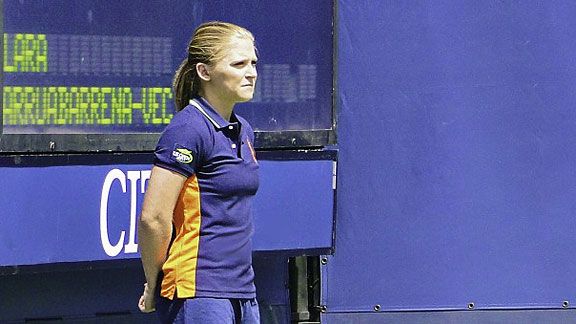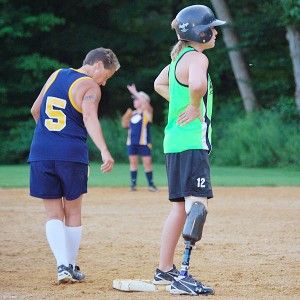Christmas is now in the rear-view mirror, and the new year
is almost upon us. That must mean that it’s time to role out my wish list for
the 2012 tennis season. Last year, I had a warm and fuzzy feeling when I put
together my wish list. This year, I have a bit of an anxious feeling. Why?
Buried in the depths of my brain is an unrelenting fear that history will
repeat itself. Truth be told, the 2011 season was a mishmash of ups and downs
(Djokovic being the exception, with his super-human season). There were moments
of brilliance mixed in with moments of drama (and not always the good kind), along with some head-scratching
moments that won’t soon be forgotten. But, I must admit, there is something
special about starting fresh. A new year makes predictions seem plausible, and
wishes seem possible.
Looking back on 2011, a few of my tennis wishes did, in
fact, come true. Caroline Wozniacki held onto the No. 1 ranking for a full year
(albeit with much scrutiny). No one broke the Isner/Mahut match record at
Wimbledon (thankfully). Juan Martin del Potro came back strong, and without any
major injury. Three players won their maiden Grand Slams (Li Na, Kvitova,
Stosur). Esther Vergeer still hasn’t lost a match since 2003. And a few more
tennis folks joined the Twitter fray (although there are still a few holdouts).
There were a few wishes that didn’t exactly go my way.
Dinara Safina did not make a full recovery from her long-standing back problems
(not easy to be wrong on that one). And thinking that Andy Roddick would score
another BIG win didn’t seem so far-fetched at the end of last year, but it
wasn’t to be.
Here is a list of things I'd like to see happen during the
2012 season:
1) Dinara Safina’s return. I’m not giving up on this one.
But, the former No. 1 has had so many starts and stops due to her back injury,
it seems unlikely that a return in 2012 is in the cards. Maybe throwing a few
extra pennies into a wishing well might do the trick.
2) Boris Becker doing more commentating. The guy is just
plain funny, and he knows a few things about winning tennis matches.
3) Caroline Wozniacki winning her first Grand Slam. I’m
assuming that her new coach, Ricardo Sanchez is making that a top priority. I
don’t think Caroline would have hired him if she didn’t think he could take her
game to the next level.
4) Roger Federer winning Slam No. 17. Let’s face it. The guy
was unstoppable towards the end of 2011. And, he has won the Australian Open
four times. I’d say he’s in a good position to win it again.
5) Alisa Kleybanova making a full recovery and returning
to competition. Beating cancer is better than winning a Grand Slam
any day.
6) Players who made a big stink about
tournament schedules or feeling a loss of control during rain delays at the
U.S. Open have left these issues hanging, with no resolution in sight. Sure,
players have individual preferences (or agendas), but I wish for the players to
come together, along with the new ATP CEO, Brad Drewett to tackle these ongoing
issues and come up with some resolutions.
7) I admit, I have a soft spot for Andy Murray. I would like
to see him win his first Grand Slam in 2012. And for once, he should call
himself a Scotsman, instead of saying he’s British (unless, of course, he wins
Wimbledon).
8) John Isner breaking into the top 10. Since winning Newport and the Winston-Salem Open, he’s been kicking his game into high gear. To have another American
player in the ATP’s top 10 would give us all hope that American tennis is
making a serious comeback.
9) Kim Clijsters’ final season is upon us. She means it this
time. For real. There are rumors that the Olympics will be her swan song, but
I’m hoping that she’ll hang on long enough to play the U.S. Open.
10) Ana Ivanovic. Probably the nicest person on the WTA
Tour, but she seems to have trouble letting go of negative thoughts. My wish is for her to focus more on the positive, and not take herself so seriously.
11) I’d like to see more players and coaches on Twitter.
Sure, there are always going to be weirdos or bullies sending nasty tweets.
Ignore them, or block them. Twitter helps to promote the game and its players,
plain and simple.
12) Venus Williams. Obviously we’d all like to see her
conquer her health battles. I’d like to see her climb back in the rankings, at
least into the top 50. I’m hoping she can get her singles ranking back in time
to qualify for the Olympics.
13) Yes, it is an Olympic year. It’s a time when being an American takes on a whole new level of importance (for me, anyway). Serena or
Mardy: Bring it.
14) Speaking of social media…I’d like to see tennis seize a
new marketing opportunity by putting “@WTA” or "@ATPWorldTour", or a particular tournament’s Twitter handle on center court somewhere. Sponsors may want to get in on the
act, too.
15) I’d like to see a change in the U.S. Open schedule. A
“planned” Monday final for the men has been tossed around in recent months.
This could work well for sponsors, TV, and fans. Can they put up a roof to deal
with rain delays? Maybe not on Arthur Ashe stadium, but certainly on the newly
constructed Court 17.
16) And how about some consistency in adhering to the rules during match play?
Some things are left to the discretion of the umpires, but really, I wish the
umpires would have a meeting and agree on how to do their job.
17) I wish that one ball person could say something nice
about Andy Roddick. I completely understand that playing on Arthur Ashe stadium
can be stressful, but it’s also stressful for Federer, Nadal, Djokovic, and
Murray (and about 100 other players). They manage to treat ball people nicely.
18) I’d like to witness one more Rafa/Federer Grand Slam
final. Simply put, it is the greatest rivalry in tennis.
19) One of the ATP’s young guns – Donald Young to be exact. Does
he have what it takes to be a top 20 player? I’m hoping he does. Will drama
follow? Well, that’s a given.
20) Vera Zvonareva. I think she’s ready for a Grand Slam
title. She’s come close on a few occasions. If she can manage to clear out the
negative thoughts when her head is covered in a towel during changeovers, I
think she can do it.








